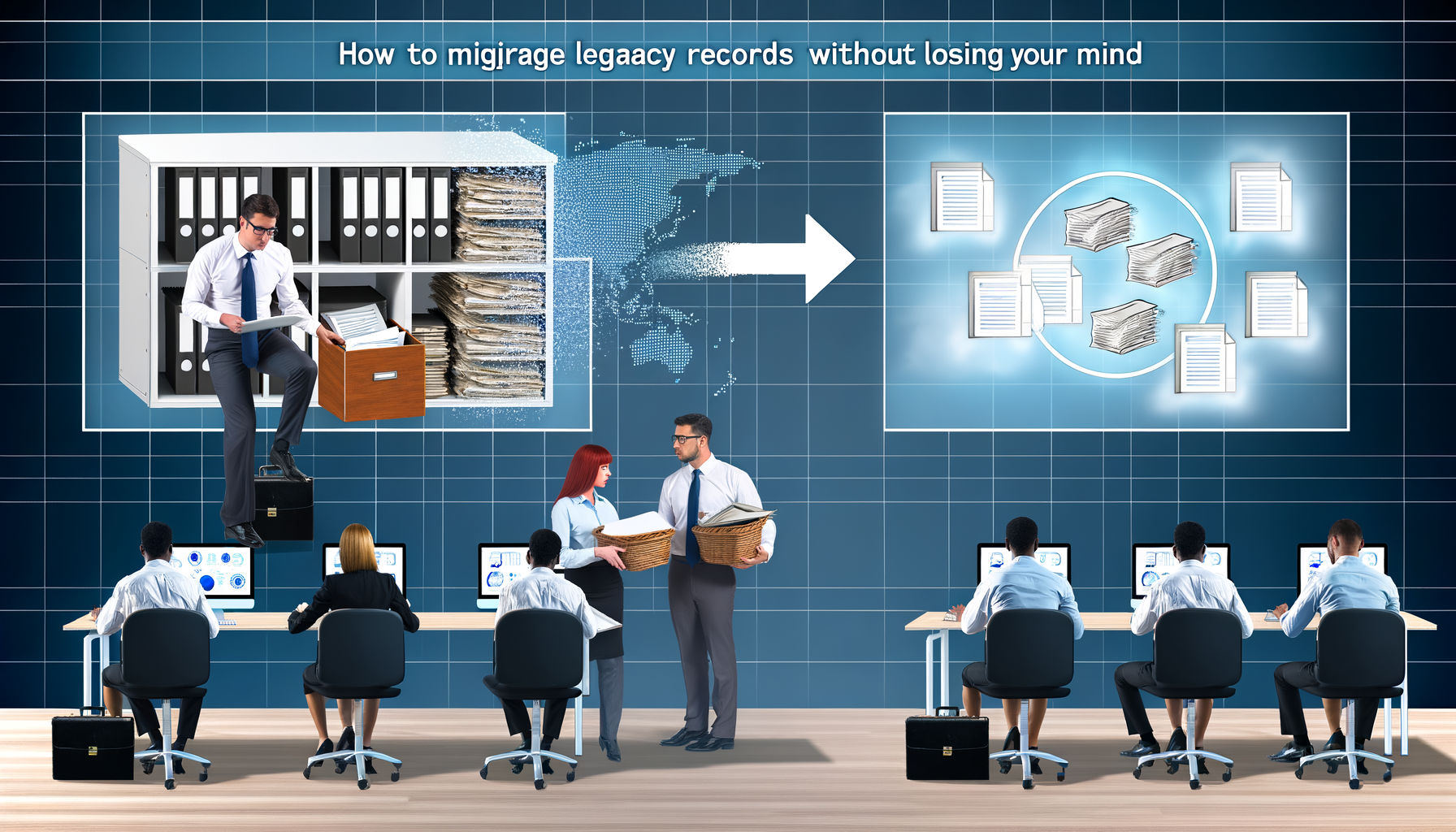
How to Migrate Legacy Records Without Losing Your Mind
As someone who’s navigated the tumultuous seas of tech entrepreneurship, I know all too well the daunting challenge that lies in migrating legacy records. This isn’t just a mundane task; it’s a mission-critical operation that, if done improperly, can lead to disastrous downtime or, worse, data loss. Having dealt with this nerve-wracking process myself, I’ve distilled the essence of a smooth data migration down to a few critical steps. Whether you’re a startup founder or handling SaaS operations, I’m here to share strategies to make your transition from legacy systems as painless as possible.
Understanding the Complexity of Legacy Systems
Legacy systems are often deeply entrenched in a company’s operations. Despite their age, these systems carry vast amounts of data integral to business continuity. The challenge lies in the fact that such systems are built on outdated technology, making data migration fraught with technical hurdles. The danger of encountering compatibility issues is real, yet the possibility of unlocking significant operational efficiencies makes it a necessary endeavor.
Crafting a Clear Data Migration Strategy
No captain sails without a map, and no business should begin data migration without a comprehensive strategy. Here’s the framework I’ve utilized:
- Assessment and Analysis: Begin by doing a thorough assessment of both the legacy system and the target system. Understand data structures, dependencies, and the volume of data involved.
- Data Mapping: Develop a clear map of how data from the old system will transfer to the new system. This map acts as a blueprint and helps in identifying potential mismatches and data transformation needs.
- Risk Management: Evaluate potential risks, from data corruption to compliance issues, and create a mitigation plan. In my journey, addressing these risks upfront has saved invaluable time and resources later down the line.
Emphasizing Data Quality and Consistency
Ensuring the quality and consistency of data during migration is crucial. Data cleansing processes—such as removing duplicates, correcting inaccuracies, and updating missing information—should be part of your migration plan. Clean data not only prevents future operational headaches but also enhances the reliability and speed of your new system.
Choosing the Right Data Migration Tools
There’s no one-size-fits-all tool for data migration. Select tools that align with your specific needs, whether it involves complex data transformation or simple data transfer. Leveraging SaaS solutions that offer flexibility and scalability can make a significant difference. Through Foundercrate, I’ve often connected with tools that streamline migration processes, offering robust support and customizability to our unique requirements.
Conducting Seamless System Migration
System migration encompasses more than transferring data; it’s about ensuring seamless integration into the daily operations of your business. Careful planning around downtimes, employee training, and testing phases cannot be overstated. Here’s my goto guide:
- Testing: Run pilot tests to monitor data integrity and functionality in the new system. It’s essential to conduct both unit testing and system testing for full assurance.
- Employee Training: Equip your team with the necessary skills to handle the new system effectively. Consider it not just an upgrade of your software but an upgrade of your human resources.
- Continuous Monitoring: After the migration, keep a keen eye on how the data operates within the new system. Immediate adjustments based on performance metrics can prevent future complications.
Seize the Yearly Trends in Data Migration
In keeping pace with evolving data transfer trends, businesses should embrace automation and AI-driven tools. These technologies promise faster, more accurate data migrations and are reshaping how companies digitize their records. I’ve observed that integrating machine learning within this sphere accelerates adaptation and helps in foreseeing potential issues.
In conclusion, while data migration from legacy systems comes with its fair share of trials, with a well-outlined strategy, diligent execution, and the right tools, it can transform your business operations for the better. If you’re considering such a migration, I encourage you to connect with Foundercrate, where our insights and resources could further simplify your journey. Feel free to reach out, and together, let’s ensure your transition doesn’t just preserve your data but also enhances it.
